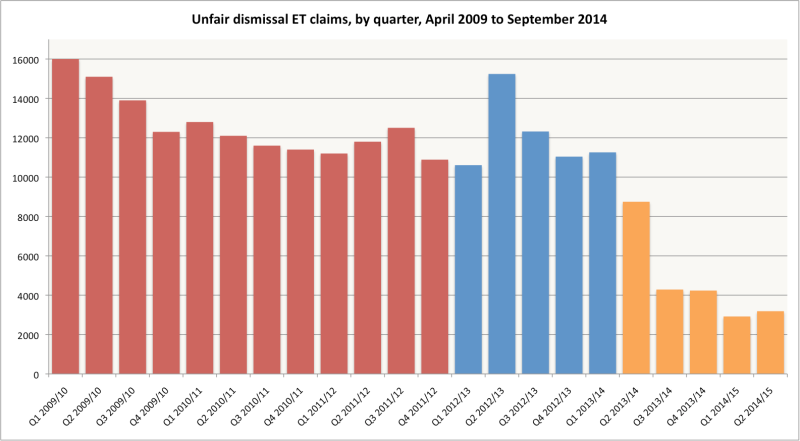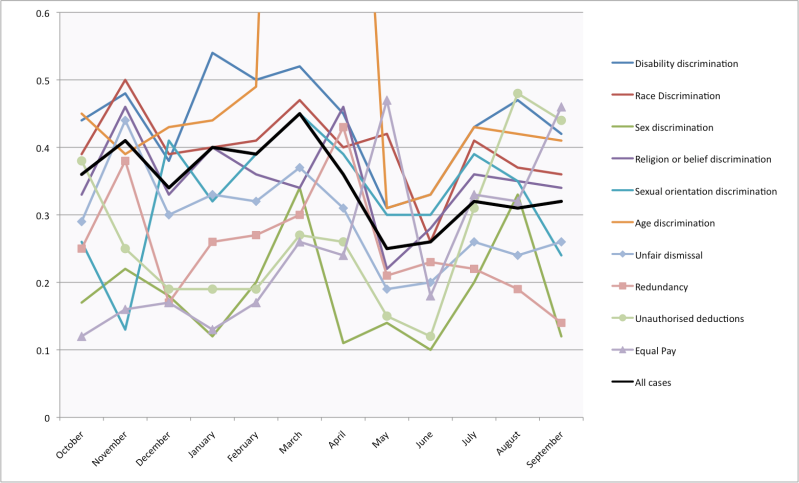So, the supposedly free-market Tories have had their Stalinist-sounding ‘long-term economic plan’, and now Labour has a ‘better economic plan’. Towards the end of the latter, a chapter entitled ‘Supporting firms to win the race to the top, not get dragged into a race to the bottom’, states:
Too often it is assumed that the only way for firms in sectors such as retail, hospitality and social care to compete is by cutting employee pay and conditions. But many firms in these sectors want to be able to compete through higher skill, higher wage business models, without being undercut and dragged into a race to the bottom.
The [Coalition] Government has actively encouraged a race to the bottom by weakening the UK’s enforcement regime and promoting a hire-and-fire culture: doubling the qualification period for unfair dismissal, introducing fees for employment tribunals, and setting up a controversial scheme whereby employees trade their employment rights in return for a share in the company.
[Labour’s new industrial strategy] is about giving employers the tools they need to raise standards, and also protect them from being undercut, by raising the minimum wage, ending the abuse of zero-hours contracts, and making it illegal to use agency workers to undercut wages and conditions.
Bafflingly, there’s no further mention of – let alone any pledge to reverse – that doubling of the unfair dismissal qualifying period. Nor is there any mention of Labour’s previous pledge to reform the tribunal fees that have done so much damage to the ‘enforcement regime’. Given that employer lobby groups such as the CBI and FSB have openly called for the hefty fees to be substantially lowered, this is an astonishing omission from what is clearly intended to be a business-friendly document.
Indeed, once you cut through the rather repetitive references to ‘the race to the bottom’ and ‘raising our ambitions for the domestically-traded sectors’, there are precious few commitments to policy reform that might actually help achieve the plan’s lofty goals. Apart from reiterating both welcome plans to “encourage more employers to pay a living wage” and the disappointingly modest pledge to “increase the minimum wage to £8 an hour before 2020”, the 80-page document sets out just three broad policy pledges specific to “reducing the pressures employers face to get dragged into a race to the bottom”:
1. Banning the abuse of zero-hours contracts: giving workers on zero-hours contracts new legal rights to be protected from employers forcing them to be available at all hours, insisting they cannot work for anyone else, or cancelling shifts at short notice without compensation, and giving workers on zero-hours contracts who are actually working regular hours week-in week-out a right to a contract with fixed minimum hours. We will also introduce a new Acas Code of Practice [on zero-hours contracts].
This is all very well, but – as I’ve previously noted elsewhere and the document itself recognises just two paragraphs later, in relation to enforcement of the minimum wage – there is no point having rules if they are not enforced. And, presumably, the only way to enforce these proposed new rules would be for individual workers to pursue a tribunal claim against their abusive employer. Which very few workers would be likely to do, even without the fees of up to £1,200 on which the document is so surprisingly silent. So, new Labour ministers could huff and puff all they like, but their shiny new rules wouldn’t blow many rogue employers down.
2. Tackling undercutting by rogue employment agencies: taking action to crack down on rogue agencies that exploit workers illegally for profit – for example through a licensing system that ensures agencies are complying with basic standards or stopped from operating; extending the Gangmasters Licensing Authority approach to cover sectors where there is evidence of high levels of migrant labour and exploitative working practices; and closing the loophole in the Agency Workers Directive that allows agency workers to be used to undercut employees.
This is more encouraging, even if it is somewhat ill-defined. However, both the employer lobby groups and past Labour ministers have been strongly against extending the GLA’s licensing regime to other sectors – with good reason. And, since 2010, Coalition ministers have reduced the BIS employment agency standards inspectorate to a rump of just three staff. So it’s not at all clear who Ed Miliband, Rachel Reeves and Chuka Umunna think would do all the cracking down. In short, there’s a lot of work yet to be done on this policy pledge if it’s to become more than a vague sop to the TUC, which has stuck rigidly to its call to extend the GLA regime.
3. Ensuring proper enforcement of the rules: there is no point in having rules if they are not enforced. Under this Government, the number of inspections into whether the National Minimum Wage was being paid has more than halved and there have been just two prosecutions since 2010. There is widespread agreement that better enforcement would support employers that play by the rules. Labour will improve this by: increasing the fines for breaching the minimum wage to £50,000; extending the remit of the HMRC minimum wage unit to cover holiday pay; giving councils a role in enforcement; and trebling the fines for knowingly employing illegal migrants.
The last of this third set of policy actions is little more than dog whistle politics, but there’s a good case for capitalising on the local, front-line knowledge of councils in order to improve enforcement of the NMW. And extending the HMRC unit’s remit to cover holiday pay is something I suggested in 2011, as an obvious first step in incrementally fusing the HMRC unit and the GLA into a genuine fair employment agency; more recently, it was a recommendation of the June 2014 report on low pay by Alan Buckle.
But Labour are kidding themselves – and the voting public – if they think that increasing the maximum penalty for breaching the NMW to £50,000 will have more than a marginal impact. For the penalty is set at 100 per cent of the total arrears owed, and in all but a handful of cases that sum is relatively small, and certainly well below £50,000. For example, among the 162 NMW-flouting firms named and shamed by BIS to date, including the tranche of 70 named today, the total arrears owed – and so the penalty imposed – was less than £10,000 in 154 cases, and exceeded the current maximum of £20,000 in just four cases. And, as they each involved a number of workers, those four cases would have been more than adequately covered by the Government’s proposed new maximum penalty of £20,000 per underpaid worker, set out in the Small Business, Enterprise & Employment Bill and almost certain to become law before Parliament is dissolved on 30 March.
Of course, Labour could increase the penalties by increasing the penalty rate from 100 per cent of the arrears owed to, say, 200 per cent. But that’s quite different to what Labour are saying they would do, and might be quite hard to justify when, in the vast majority of cases, the total sum owed in underpayments is relatively small, and the employer is a (very) small business. Among the 162 firms named and shamed by BIS, the average underpayment per worker was just £306.11, and no fewer than 35 of the 162 firms are hairdressers or beauty salons. We’re (mostly) not talking big corporates here.
All in all, Labour’s ‘better economic plan’ is depressingly short on credible, fully-formed (and costed) policy ideas for halting the race to the bottom in pay and working conditions. The good news is that I’m available to help sort that out, and my daily rate is a lot less than Jack Straw’s.
Waiting for your call, Chuka.


